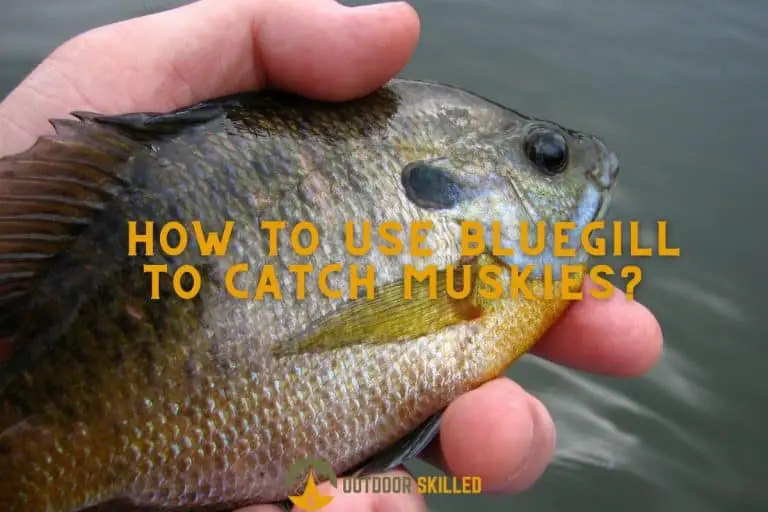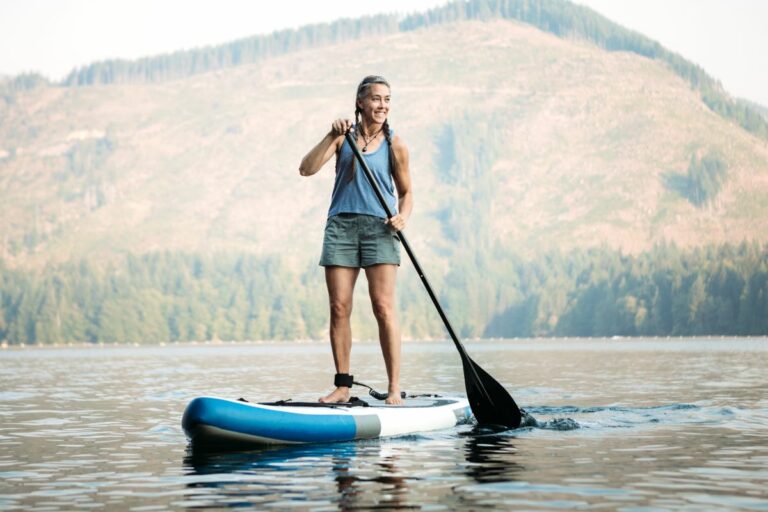How To Fish With a Wooly Bugger? A Complete and Simple Guide
In the world of fly fishing, using a wooly bugger is a very popular technique. Since it is so simple and effective in catching almost any fish swimming around, even beginners can use it. There is no wrong way to use fish wooly buggers, but there are more efficient ways to get more fish on the hook.
So, how to fish with a wooly bugger? You can fish with a wooly bugger in various ways. The most common approaches are either dead drifting where you sink it with a split shot or build weight into the fly to make it sink deeper to an exact depth or as a streamer by casting it across the current and strip it back with different speeds.
Keep scrolling to find the simplest guide on how to fish with a wooly bugger in a more efficient way and save it so you can use the advice on your next fishing adventure.
Table of Contents
What Is a Wooly Bugger?

So what is this popular go-to? Wooly buggers are streamers that resemble baitfish, minnows, crayfish, leeches, and other foraging items for fish. Because of the wide variety, the angler can customize it to look like any fish they choose, making it useful in any situation and anywhere such as streams, lakes, rivers, and salt flats. This representation is enhanced by the endless patterns of colors and shapes, as well as the realistic motion in the water.
The size range is also a bonus, as it helps you to make a personalized wooly bugger that exactly suits the fish forage. Smaller fish prefer smaller wooly buggers, while larger fish prefer larger wooly buggers.
Another benefit of using a wooly bugger is that you can cast it on the water’s surface or down into the water, depending on the depth at which your target fish is roaming. As fish prefer to change their depth in response to temperature and light levels, this makes it suitable for different seasons and times of the day.
Do Wooly Buggers Sink or Float?
Do wooly buggers sink or float? Wooly buggers float on the surface until they are immersed in water, at which point they begin to sink. Its materials allow it to float on the surface until you dip it in water and squeeze it until all of its sections are wet enough to sink.
When it comes to catching fish, using a floating wooly bugger is just as good as using a sinking one. Floating buggers can hook surface-feeding fish that like to look up when hunting. Sinking buggers, on the other hand, get into the deep where larger fish feed.
If you want to learn more, you can check my post on do wooly buggers sink or float here.
How To Choose The Right Wooly Bugger Size?
As I said before, one of the most useful things in using a wooly bugger is the wide size range it presents. They’re normally tied on hook sizes 10-4 but can be tied all the way down to size 20. How to accurately pick the size depends on where you are fishing and what you are fishing for.
In creeks, ponds, and other smaller water bodies, it’s better to go for smaller sizes like 10 or 12 or even smaller. In rivers and lakes go for bigger sizes such as 6 or 8 to match the fish there. It’s important to match the forage of your target fish, if it’s after smaller fish you should pick smaller sizes.
How To Choose The Right Wooly Bugger Color?
Choosing the right wooly bugger color depends on the light conditions of the day you’re fishing on, and the imitation of fish’s forage. Sunny days and shallow water require light-colored buggers such as pink, chartreuse, purple, and bright green. While cloudy days or nighttime fishing and deep water require dark-colored ones such as olive, black, and brown.
Pro-tip: Match the color of the water when fishing with a wooly bugger, especially the deeper sections of the river.
The color patterns aim mainly at mimicking the fish forage, so choosing the exact color for a target fish needs research first on what this color imitates. Here’s a cheat sheet for you to use when you are making your next wooly bugger pattern:
| Color | Function | Usage Case |
|---|---|---|
| Black | Imitates large stonefly nymphs, leeches, and minnows, and other wide variety of things. | It works best in different water types from rivers to lakes and ponds. Works best in stained water early in the season or after heavy rains. |
| Olive | Imitates damsel and dragonfly nymphs. | Used best in lakes and ponds especially around weed beds and rocky structures. |
| Brown | Imitates crayfish, hellgrammites, small minnows, Golden Stone nymphs, and large dark mayfly nymphs. | Can be used anywhere anytime, especially if it’s combined with another natural color. |
| White | Imitates baitfish when combined with other natural colors. | Very effective in cloudy days and night fishing. |
| Gray | Imitates baitfish when combined with other natural colors. | Used best in lakes and ponds on cloudy days. |
| Yellow | Imitates Yellow Sallie nymph. | Works best on sunny days and shallow water. |
Using different combinations of colors and patterns gives your wooly bugger a more realistic representation which maximizes your chances of getting multiple strikes. The only way to know which combination works best and where is to try on different days and various conditions.
Best Time To Use A Wooly Bugger
So, what is the best time to use a wooly bugger? The best time to use a wooly bugger is both mid-spring and mid-fall. These are excellent times to cast a large woolly bugger. Fish are competitive and heavily feeding on these days, so they prefer to go for massive meals. Winter and summer are the least productive months for these fish.
When you know the fish are deeper in the water column and feeding at the bottom, it’s time to use a bugger. If you know there are huge fish in the river you’re catching and you’re stumped on what to use, always put a woolly bugger.
Wooly Bugger Patterns For You To Try
There are endless patterns for wooly buggers and you can use them to imitate almost any fish. Here are some popular patterns that proved efficient in catching various species of fish.
Black Wooly Bugger

All black wooly buggers imitate large stonefly nymphs, leeches, and minnows, and other wide variety of things. It works best in different water types from rivers to lakes and ponds especially in stained water early in the season or after heavy rains.
You can even get black wooly buggers on Amazon from here.
Crystal Wooly Bugger

The white natural color of Crystal Wooly Bugger that can also be combined with black and grey imitates small baitfish and works best for different types of fish. It offers great visibility in dark waters, especially at night because of how it contrasts with it.
You can get Crystal Wooly buggers on Amazon here.
Olive Wooly Bugger

Olive Wooly Bugger is one of the most popular patterns due to how effective it is. It imitates damsel and dragonfly nymphs that lots of fish feed on. Combined with green or yellow flash can be eye-catching especially in stained waters.
You can check it on Amazon here.
The Grey Fred
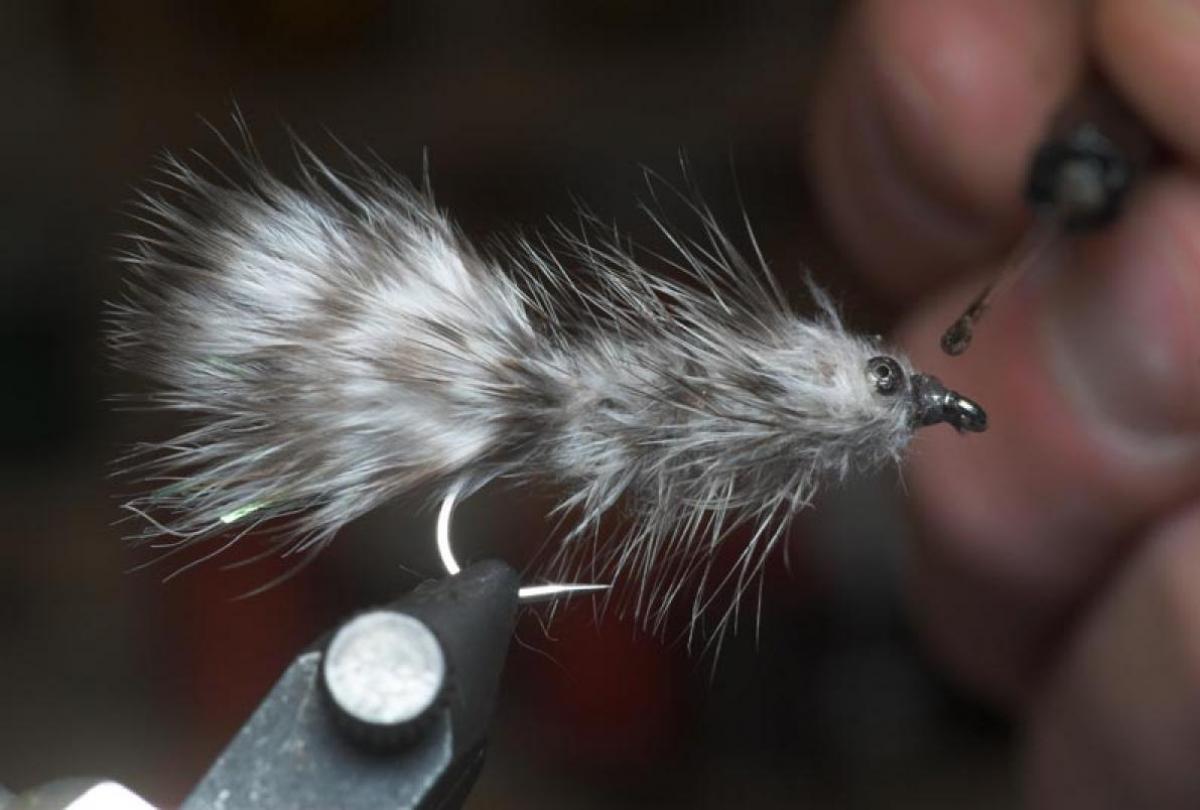
The fly is a very universal imitation of every tiny, vibrant fish that the vast majority of Danish coastal anglers are familiar with. It’s effective in catching cod, garfish, largemouth bass, sea trout, smallmouth bass.
Fish You Can Catch With a Wooly Bugger
So, what fish can you catch with a wooly bugger? You can catch lots of different fish with a wooly bugger such as trout, bass, salmon, steelhead, carp, Giant Trevally, bonefish, triggerfish, tarpon, and panfish. Wooly buggers are also effective for almost any fish when used in the right size and color.
The reason why most people prefer wooly buggers in fly fishing is that they can fit almost any fish’s forage. It can be useful in hooking several fish in various seasons and times of the day with infinite colors and combinations.
How To Fish A Wooly Bugger For Bass
Wooly buggers are highly useful when fishing for bass. This is because bass is used to heavy hard bait or soft plastic bait, which entices their interest in attacking these flies. Don’t be afraid to spend time fishing for bass in familiar areas; you’ll have a lot of fun with buggers.
To catch bass with a wooly bugger, cast it near the bottom and drag it around slowly and steadily imitating a crayfish. You can also jerk it in, or combine both techniques till you get lucky. Bass strikes at various speeds so make sure to try different ones throughout the day. Use dull colors like black, brown, or olive. Be aware not to use too much material on your fly to enable it to sink faster.
To get even better chances of catching bass, check out my guide on bass fishing lines here. These are my personal recommendations of the lines I’ve been most successful with over the last few years, and I’m sure they will be as helpful to you as they were to me.
How To Fish A Wooly Bugger For Steelhead
Steelhead can be caught using a bugger, a beadhead sized 4-10 that looks like an egg. Steelheads are always on the lookout for eggs, so a beadhead will do the trick.
The most successful strategy will be to dead drift a wooly bugger under an indicator in a tandem nymph rig or swing it into the current. Mixing both tactics can lead to catching a large number of fish. You can choose between white, olive, and black when it comes to steelhead fly fishing.
How To Fish A Wooly Bugger In Stillwater?
On Stillwater fisheries, nothing tops the Woolly Bugger. especially when the damselflies are out and about. That’s when the olive Bugger will shine as the most effective pattern. It can be bounced around the bottom like a crawfish when it’s bound with heavy lead eyes and rubber legs.
You can dead drift a woolly bugger downstream by inserting a split shot or building weight into the fly to make it sink and suspend at a certain depth with an indicator. Then, you can strip it back to you at different speeds until you get a strike. This is where the most aggressive strikes occur. It’s important to use trial and error multiple times to find the correct size and color of your bugger.
How to fish a wooly bugger with a spinning reel
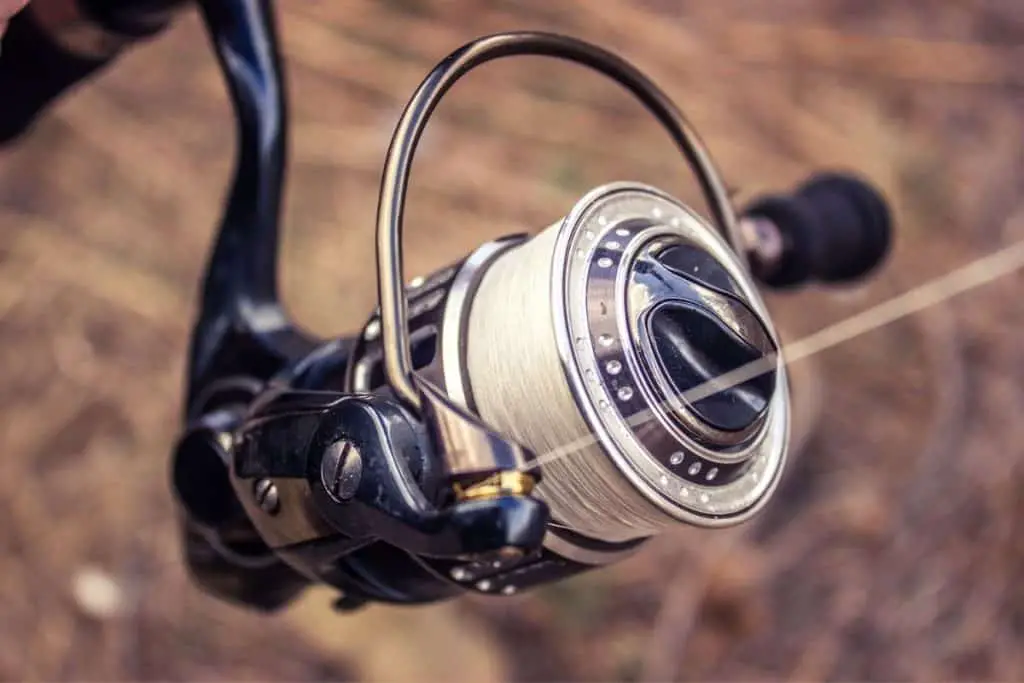
Fly fishing with a spinning reel can be a good bet. Many people tried it with wooly buggers and got very lucky with multiple violent strikes of different fish species. Anglers argue that sometimes using a spinning rod to fly fish is much more effective. The advantage over simply casting the same flies on a fly rod is both range and control because the line is so much thinner and lighter in weight.
Rods and Reels
You can use a 5 ft (1.5 meters) rod in small streams and a 7 ft (2 meters) one for larger rivers and lakes, keep it at 4-pound and match the reel with it so it balances the weight. Make sure the reel has a smooth drag system to provide adequate control. I have a complete guide on the best budget spinning reels here, and another post on how to select the right spinning reel here.
Choosing the right rod weight will mainly depend on which fish you’re targeting. If you’re going for bigger fish, using any weight that’s less than 5 or 6 pounds will require more effort in controlling it.
Lines
You won’t necessarily need a sinking line in small water bodies as wooly buggers are heavy enough to sink on their own. Instead, you can use weight forward or floating lines as long as your leader is long enough to reach the wanted depth. In deeper waters, a sinking line will be a good idea.
Leaders
Some anglers argue that using 0 or 1x leaders is kind of excessive. But it’ll help you especially if you’re expecting a large trout to strike and it’s important to come prepared.
Use a split shot 12-to-15 inches (about 30.5-to-38 cm) above the fly to bring it down near the bottom, then cast slightly downstream and around. Twitch the fly along with gentle pops of the rod tip as it falls and continues its downstream arc. The bulk of hits usually occur at the end of the swing.
How To Tie a Wooly Bugger?
There are endless ways of tying your wooly bugger in different patterns and colors. Since black wooly buggers are one of the most popular patterns that imitate lots of fish forage, let’s get into the steps of creating your own:
Black Wooly Bugger
Materials:
- A size 4 – 1 hook
- Danville Flat waxed 70 Denier colored thread
- Cock saddle or neck hackle
- Black Marabou as a tail
- Black Flashabou
- Black and purple Cactus chenille for the body
- Glue
- A bobbin holder
- A vice
Steps:
- Secure the hook in the vice and try to move it to make sure it’s fixed.
- Wrap the thread multiple times around the hook using the bobbin holder. Stop wrapping right before the hook bend.
- Tie the marabou tail to the back of the fly starting at the hook bend where you stopped wrapping the thread. The tail must be as long as the hook shank.
- Add some flash to the tail by tying it with multiple thread wraps.
- Now you may add more marabou feathers to thicken the tail if you want a bigger wooly bugger.
- Tie the hackle at the base of the tail with some securing wraps then cut off the excess.
- Cut a suitable length of chenille and tie its tip at the base of the tail. Then run your thread to the front of the fly and stop before reaching the eye.
- Wrap the chenille forward with touching turns until you reach the spot where you left the thread then secure it with a couple more turns. Cut off the excess.
- Wrap the hackle forward around the body and secure it with 3 or 4 more wraps once you reach the end of the body.
- Create a head for the fly using multiple thread wraps.
- Apply a thin layer of glue to the top and bottom of the head and spread it evenly while you’re turning the body.
- Most wooly bugger patterns share the same steps with a slight change of hook sizes and material used, so you may use this basic one to create your own.
Related Questions
How Small Is Too Small For a Wooly Bugger?
No wooly bugger is too small for a wooly bugger. Wooly buggers work for any fish in any water, even the ones you’re not primarily targeting. The smallest buggers will still work for some fish imitating their forage.
Are Wooly Buggers Dry Flies?
No, wooly buggers are commonly categorized as wet flies or streamers. It’s true that they float on the surface until it soaks up water but they’re more commonly used for fishing under the water surface.
Do You Have To Use an Indicator When Fly Fishing With Wooly Bugger?
No, you don’t have to use an indicator when fly fishing with wooly bugger. However, it can make your job much easier, and catching fish with a strike indicator takes less skill than without. This decision can also be made in consideration of the size and weight of the fly.
Helpful Resources
If you like this article, please share it or pin it, you can find the share buttons below. We will really appreciate it ❤️


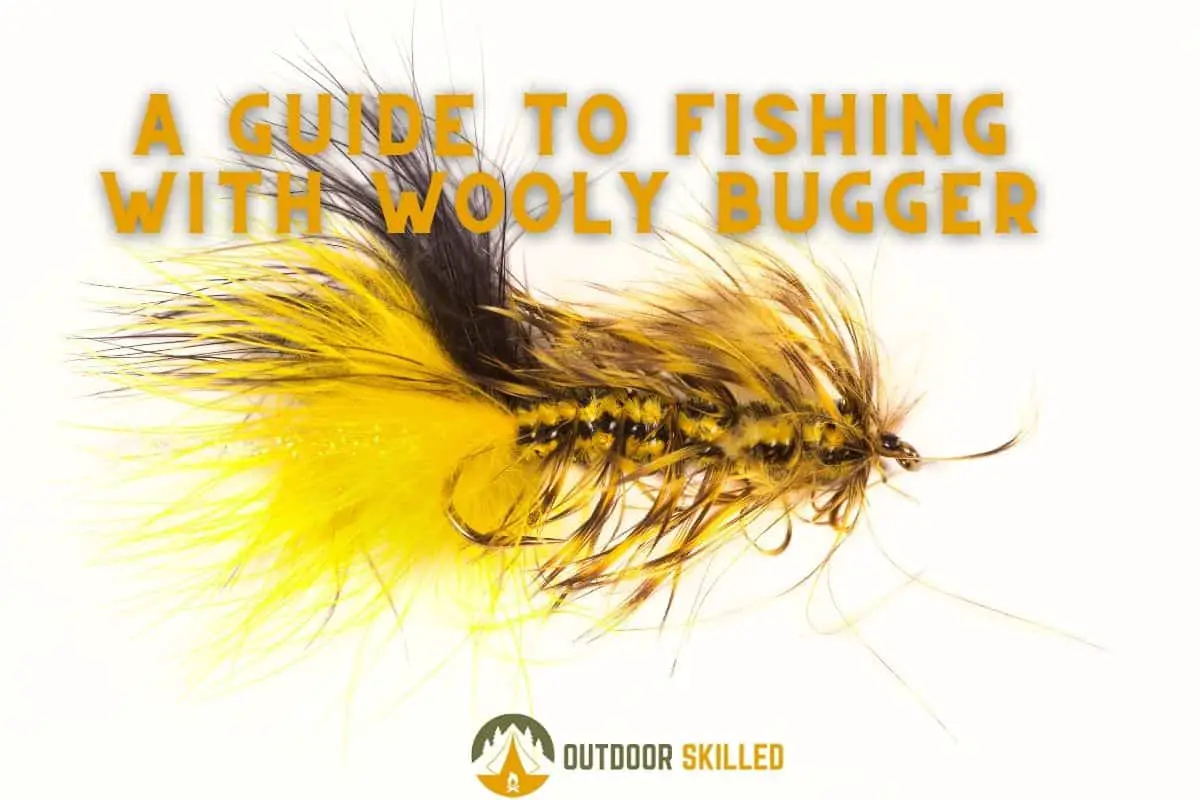
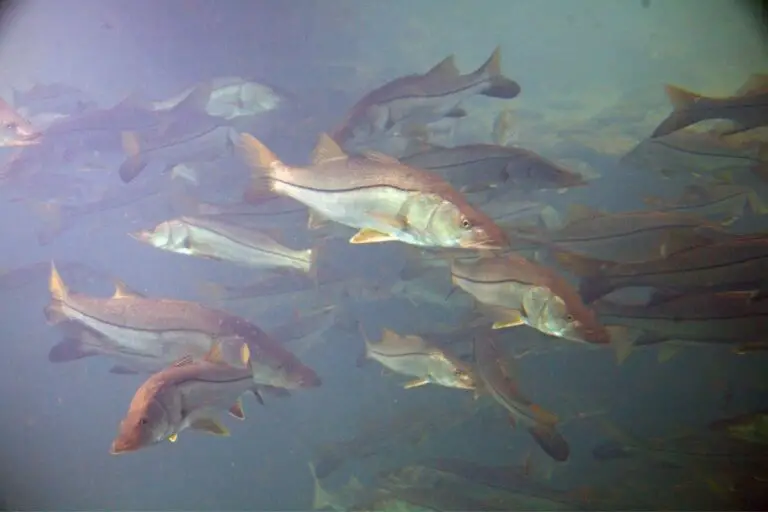
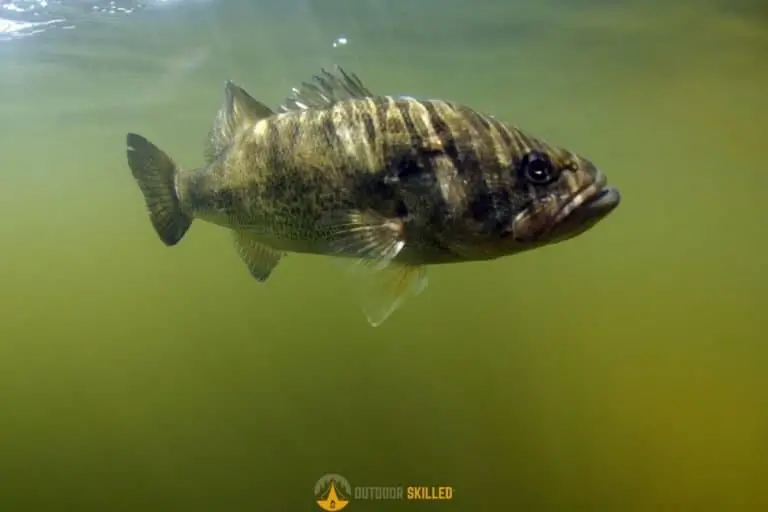
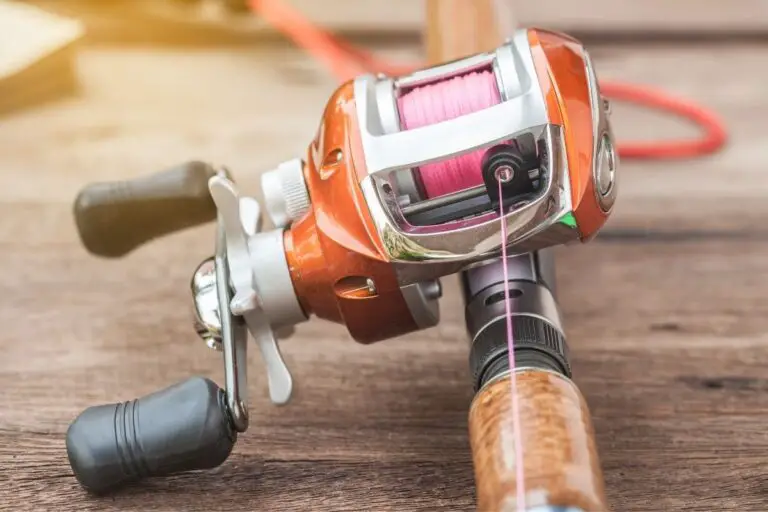
![Do Pike Eat Shrimp? [A Guide to Catching Pike with Shrimp]](https://outdoorskilled.com/wp-content/uploads/2022/04/shrimp-as-bait-on-hook-768x512.jpeg)
